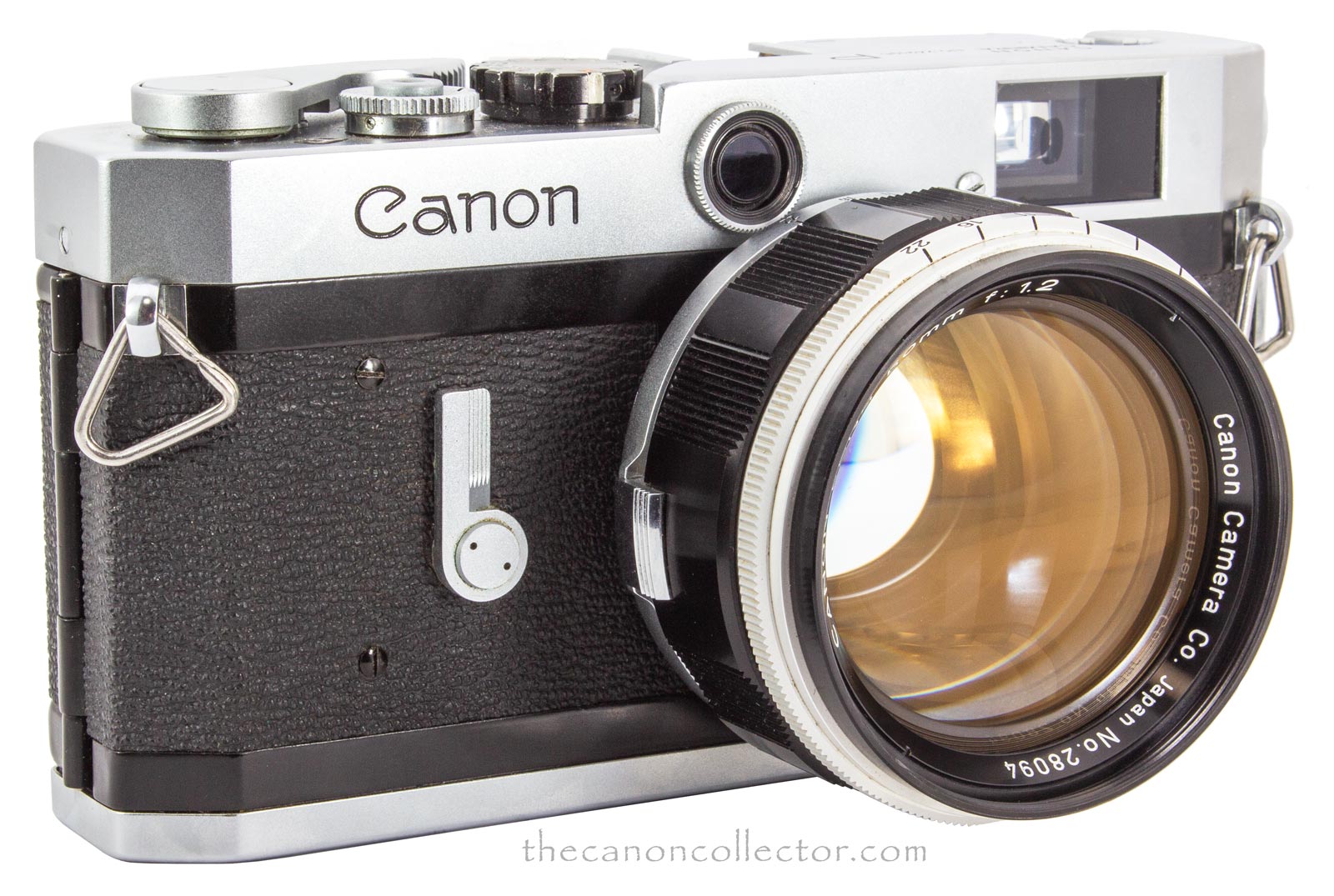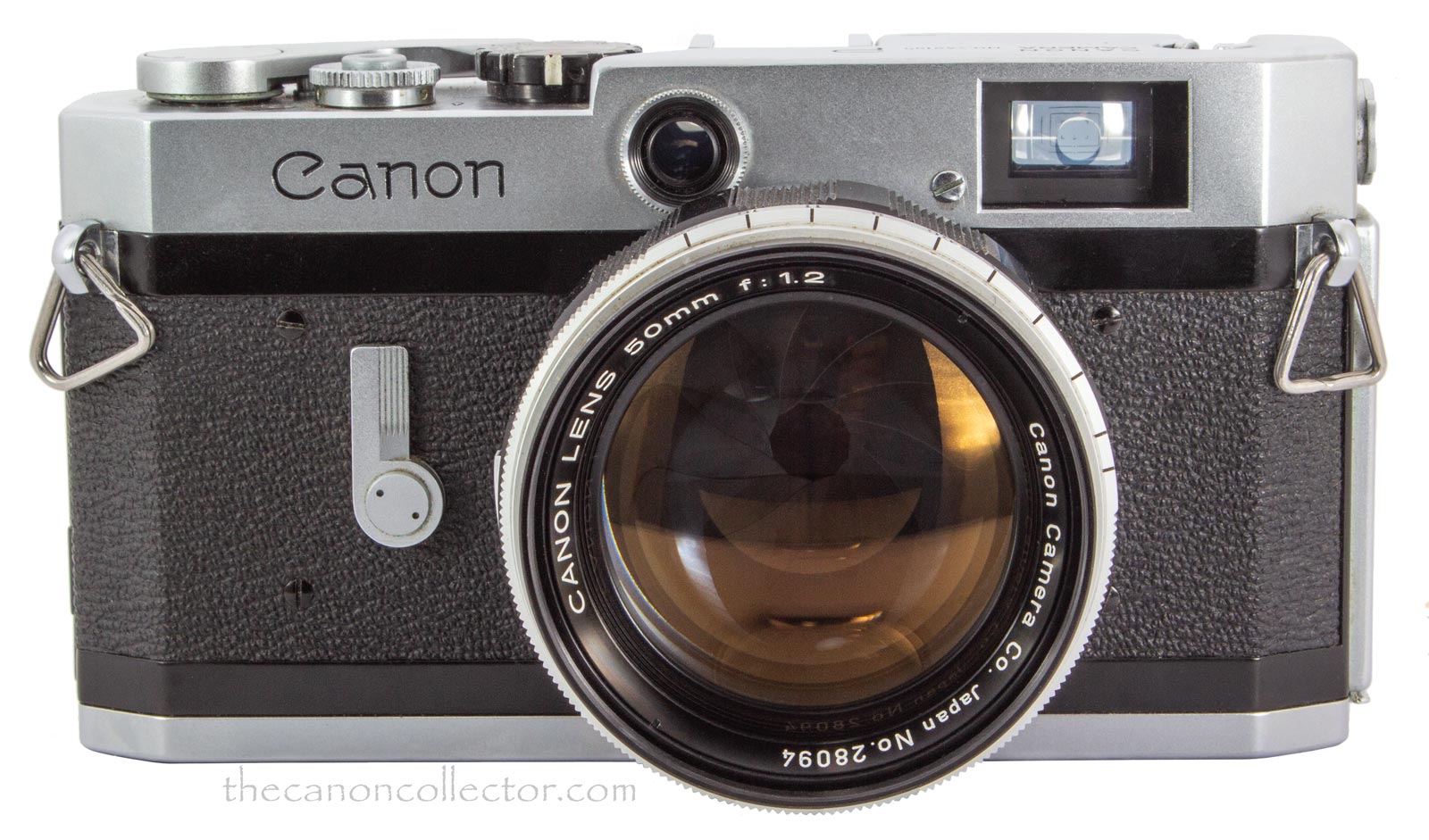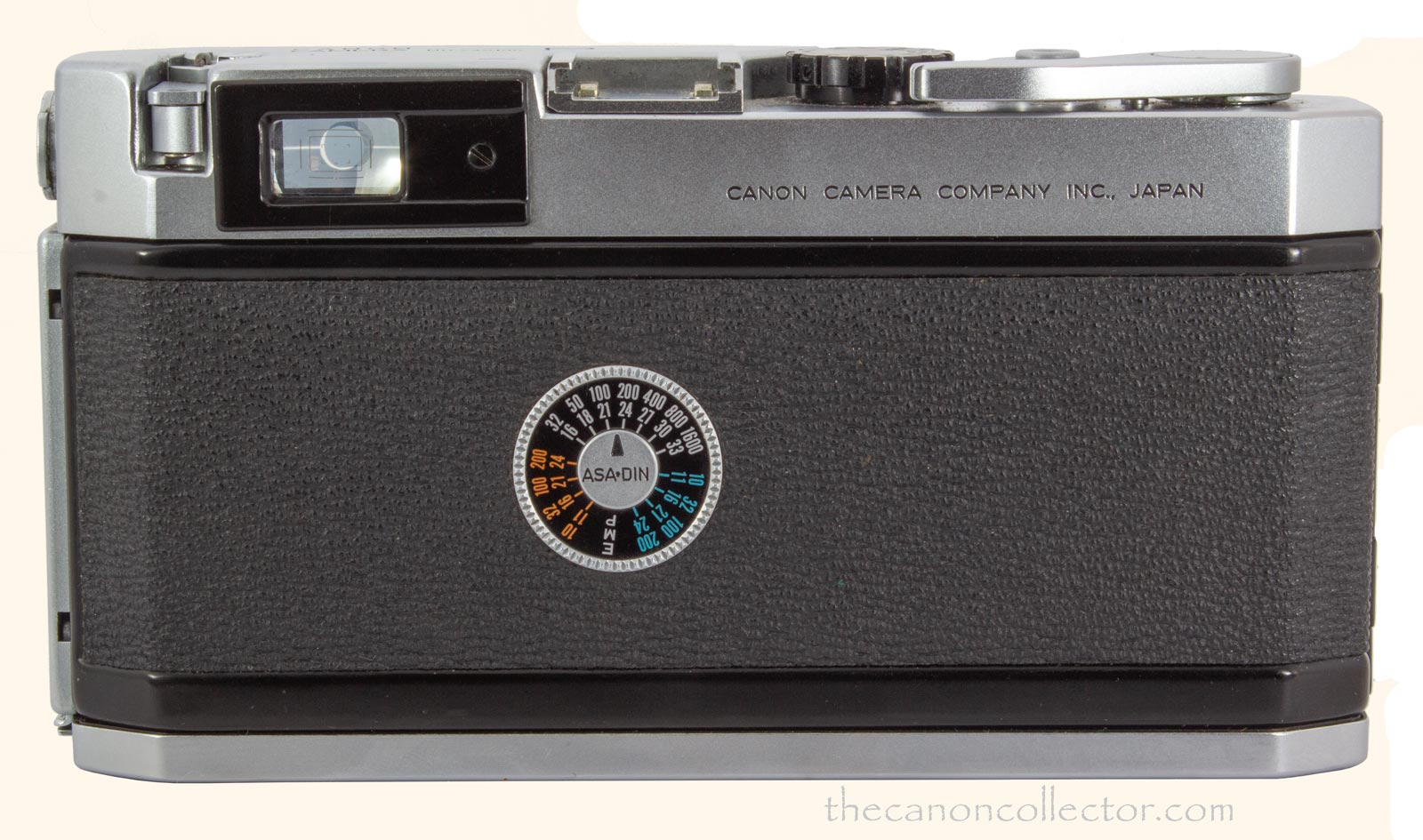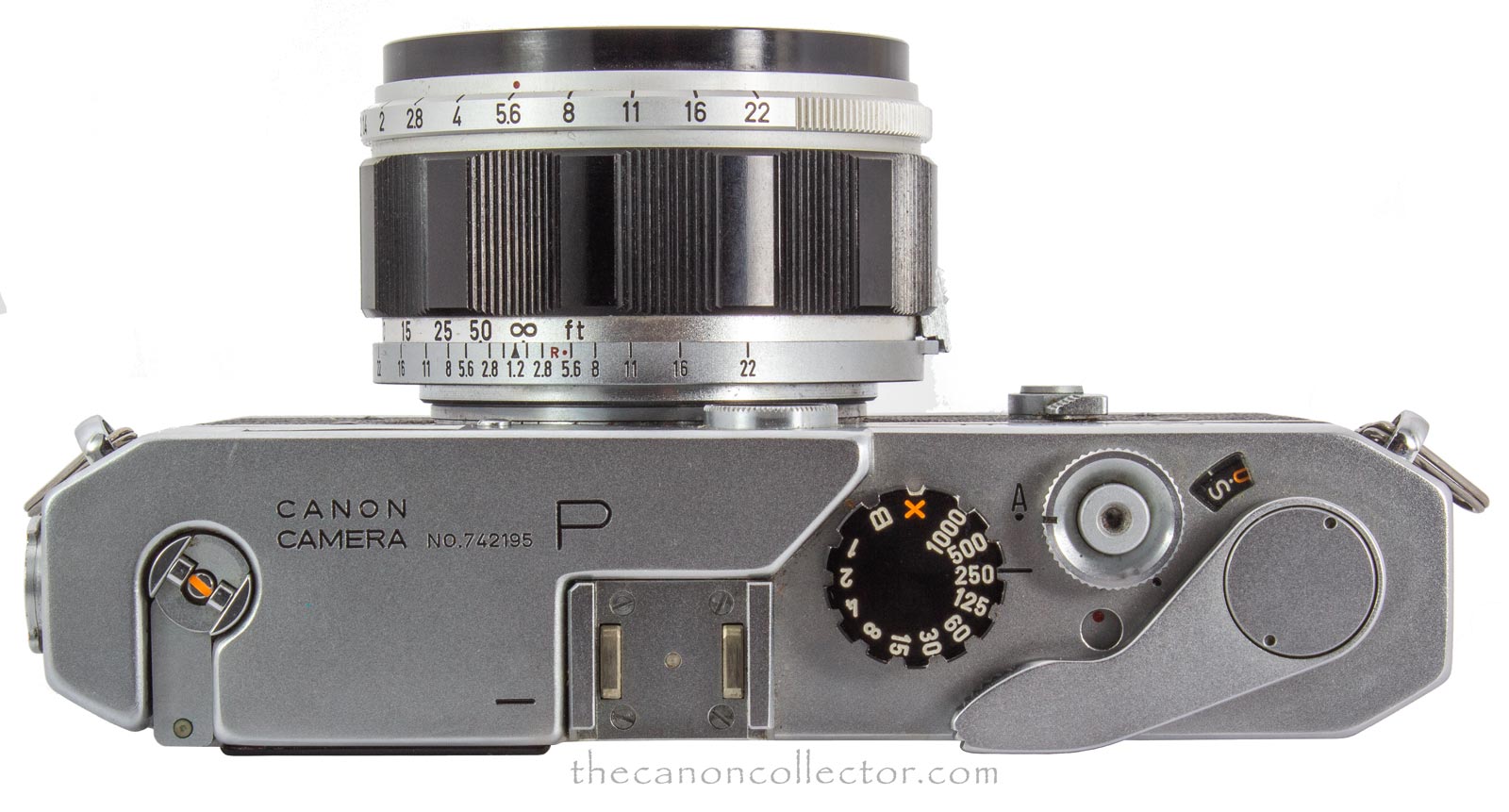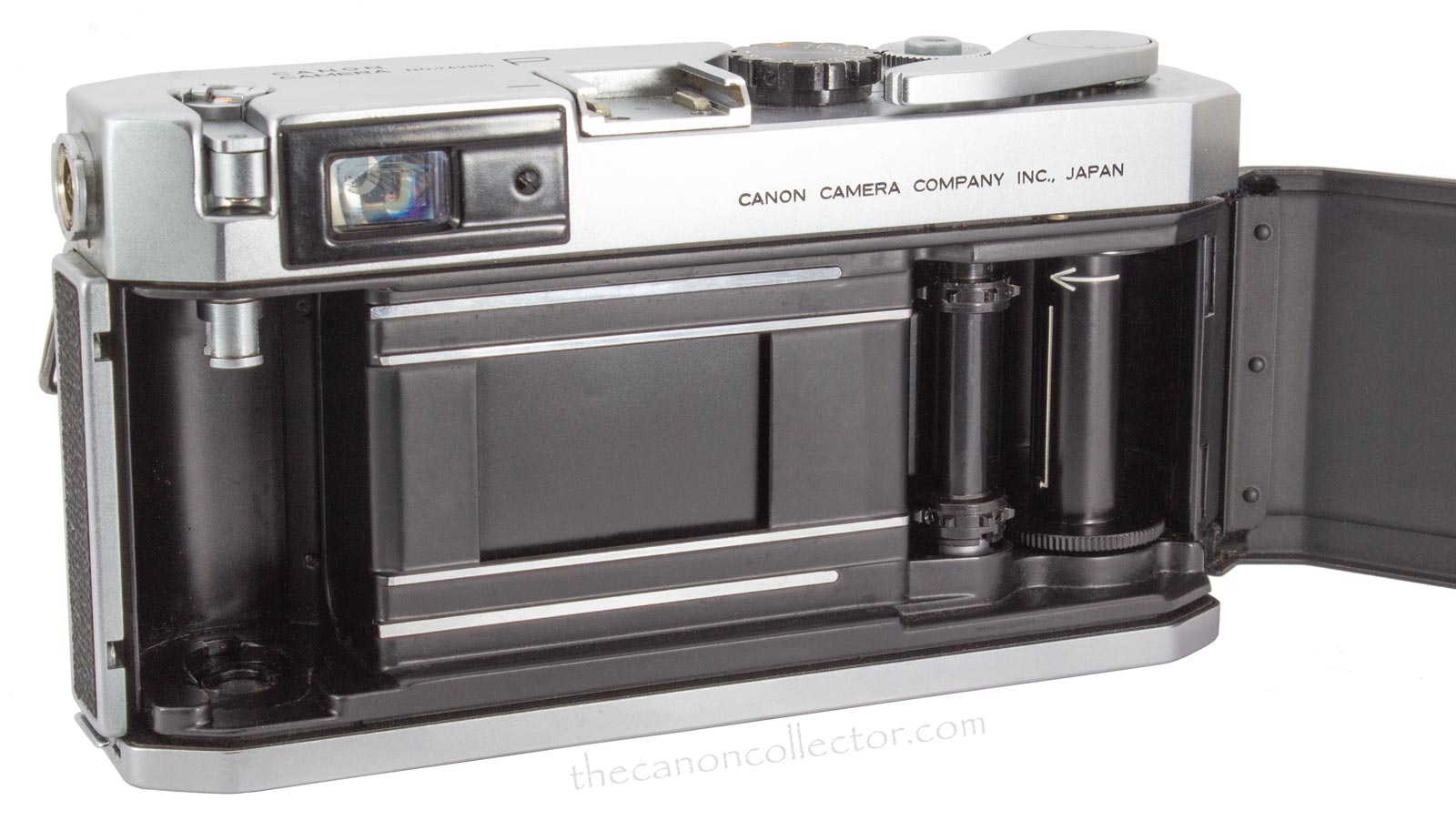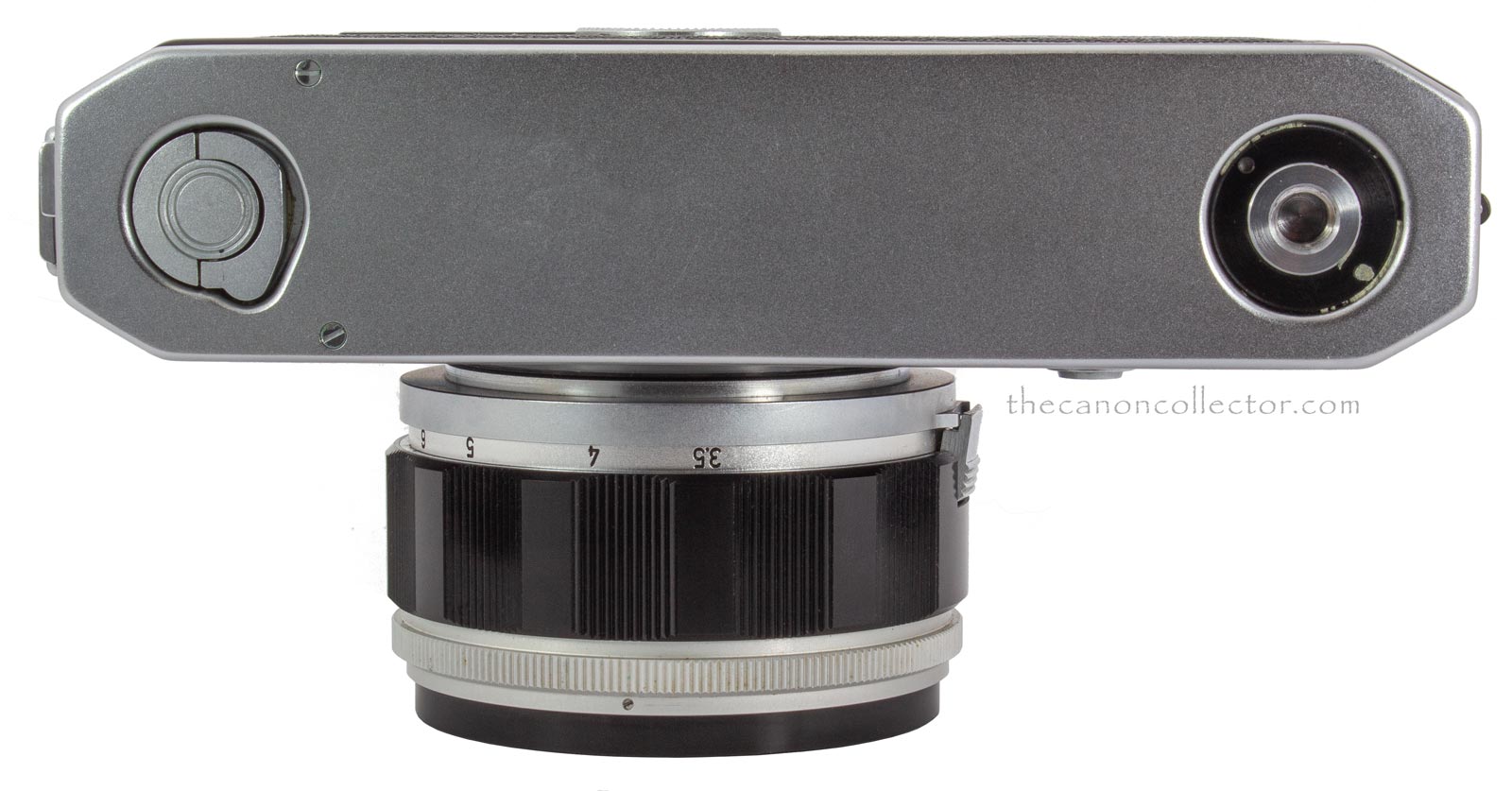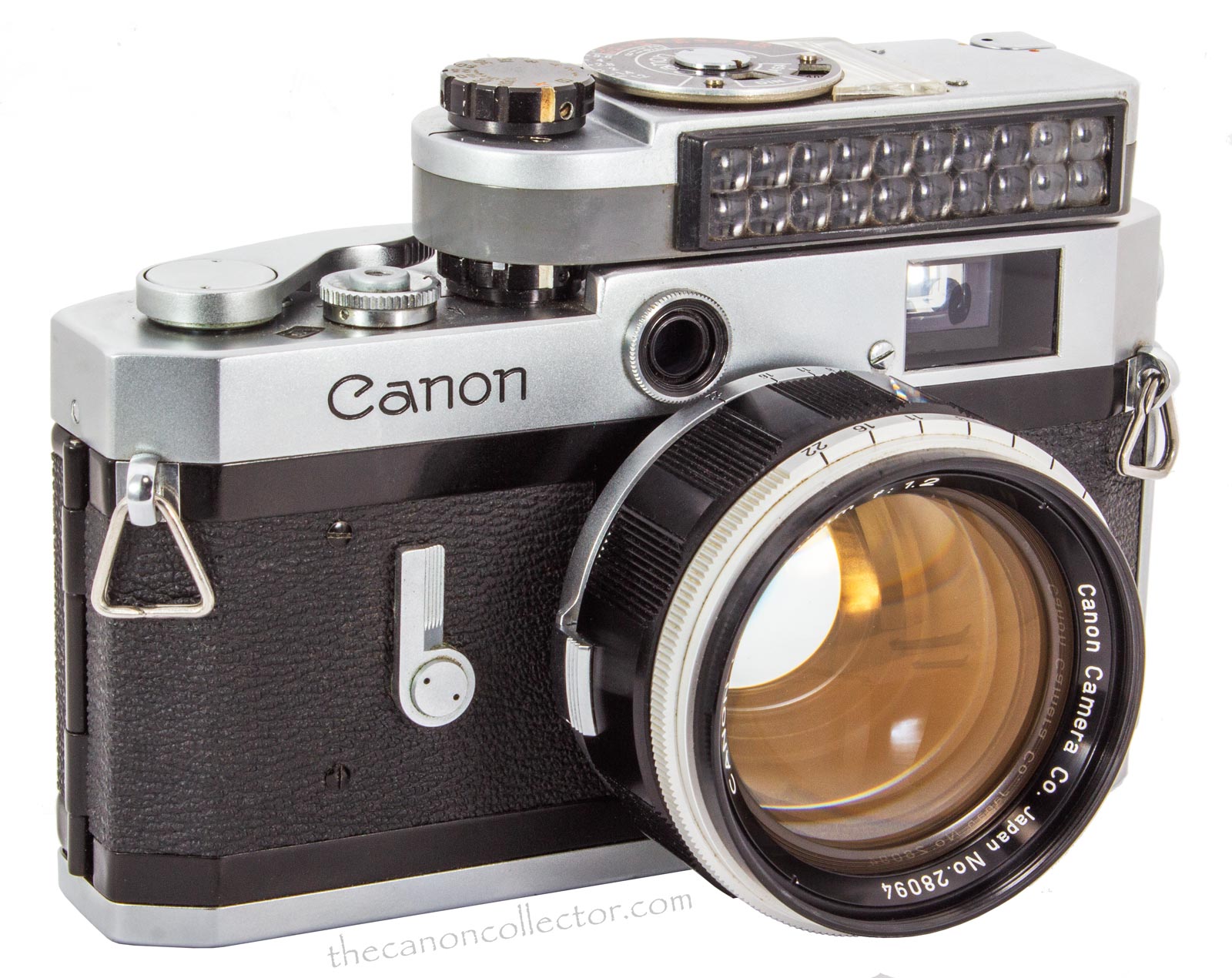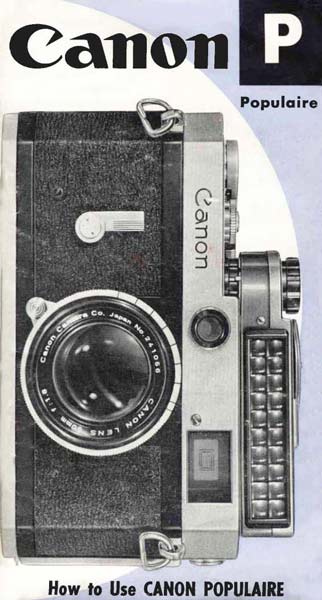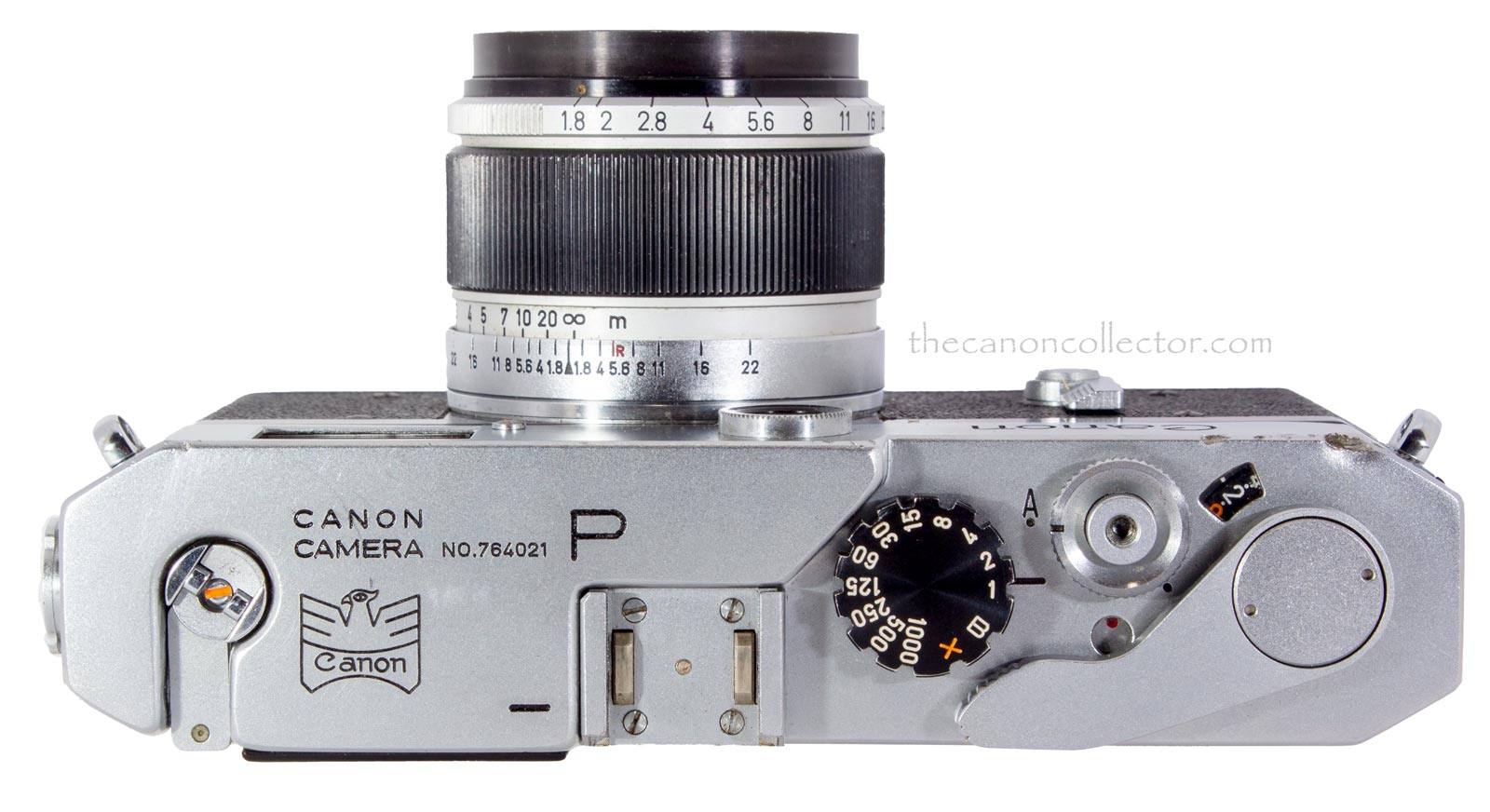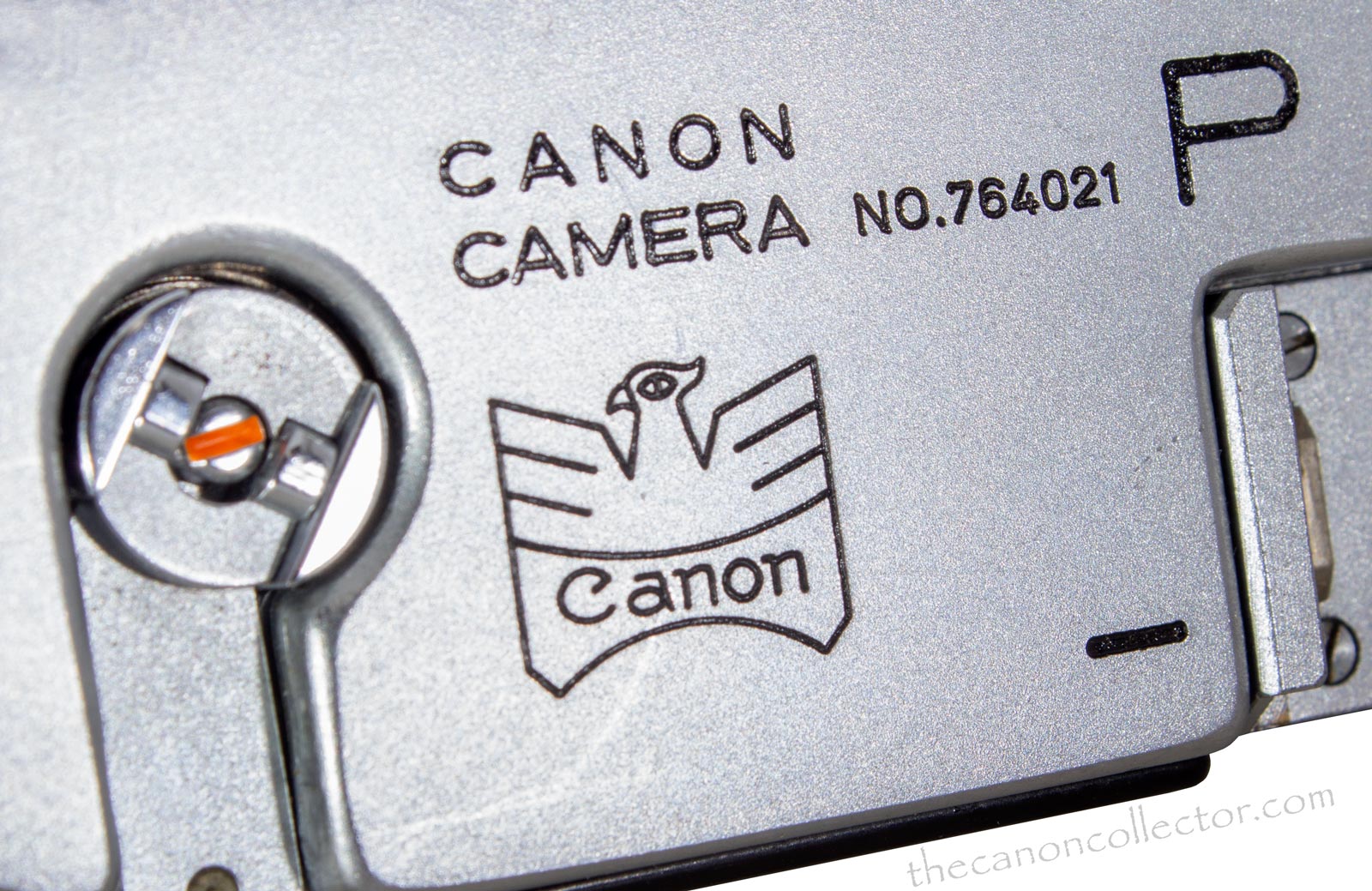The Model P
“Populaire”
When Canon brought to market the
Model VI-L in June of 1958 they were to be disappointed in its sales. Although it was
a very advanced camera with all of the
features Canon had become known for there were only around 10,300 produced. The VI-T brought out at the same time did even worse with only around 8,100 sold. So what happened? Was it the cost of the camera?
Canon’s next camera, the Model P released in December of 1958, was a Model VI-L but simplified to reduce cost of manufacturing and thus the retail price. And with this camera Canon had a winner. The Model P went on to sell more copies by twice than any other camera produced to that point. In all, over 87,800 of them.
The front of the Canon Model P is identical to the VI-L with the self timer on the left. Behind the screw next to the viewfinder window is the vertical adjustment for the rangefinder.
The major change in the Canon Model P concerns the viewfinder. In this camera Canon eliminated their justly famous three mode viewfinder. Instead, in the Model P viewfinder you see a 1:1 view that is equivalent to the image given by a 35mm lens. Then floating in the image are outlines for the 50mm and 100mm lenses. And these outlines are parallax corrected!
Of course, since the viewfinder frames are parallax corrected the correction pin in the equipment shoe is not required and was eliminated.
We have a Newsletter
There is a Newsletter for thecanoncollector.com to keep you up to date on what we are posting. Try it!
The Top Deck has a very traditional layout with no surprises. In the small window between the shutter button and the film advance lever is a small circular window. The red dot there rotates around in the hole as film moves in the camera.
The inside of the camera is very traditional in layout. For instructions on loading film refer to Page 11 in the User Manual.
Light Meters
Starting with the VI-L the VI-L, VI-T and the Canon Model P cameras were designed to be used with the Canon-Meter or the Canon-Meter 2 clip on lightmeters. These meters are basically the Canon equivalent of the Leitz Leicameter M.
The shutter seed dial is keyed on the edge to accept studs on the underside of the Canon-Meter which locks the speed dials so that changes on the meter are transmitted mechanically to the camera’s shutter speed dial.
The instructions for attaching and removing the Canon-Meter can be found on Page 19 of the Model P User Manual.
On the bottom is the tripod mount on the right and the key to open the back on the left. The key was also used to open and close the Canon Film Cassette inside the camera after the door was locked.
The shutter is the same as in the VI-L. It is a metal curtain travelling horizontally. On the shutter speed dial is the setting for X sync plus B and 1 to 1/1000th of a second.
Flash synchronization is covered on page 23 of the Canon Model P Manual. When using flash bulbs one uses the Canon Flash Unit V fitted into the Flash Unit Connecctor Socket on the left end of the camera. FP, M and F type flash bulbs may be used.
For speedlight operation, Canon offers the Canon Speedlite Unit Model V. However, non-Canon speedlights may be used using the Canon Extension Cord which plugs into the Flash Unit Connector Socket. Of course using a speedlight requires the shutter to be set to the X setting on the shutter speed dial (1/55th sec.).
The Canon Model P is designed to couple to the Canon-Meter through the shutter speed dial. WHen the shutter dial on the Canon-Meter is turned it turns the camera’s shutter speed dial.
Canon Model P Variations
There are several minor variations on the Canon Model P.
The obvious one is the Black Body Model P’s which are not very common. Buyers had the option to by a Canon-Meter in black as well. It made a very distinctive set to hang around your neck.
But beware when buying one because there are many repainted black Model P’s, maybe more than original ones. The repainted bodies do not bring near the same price as an original black.
And then there are two different accessory shoes. The one on my Model P shown in these pictures has a hole in the middle of the shoe showing the end of a screw securing a spring assembly on the underside of the top deck. The other shoe had no such hole and only showed the four mounting screws.
There were four styles of film reminder dial on the back cover. Not a big variation but it is an obvious one. And the body shell of the camera changed over the time it was in production. This is a difference not easy to spot unless you disassemble the camera (don’t do that, please!). These variations are pretty minor. None affected operation of the camera.
The 25th Anniversary Commemorative Model P’s
To my thinking, the important variation after the black models, is the camera engraved to commemmorate the twenty fifth anniversary of Canon. These cameras were engraved with a modified “Seiki Eagle” trademark which was located on the top deck beside the rewind crank.
They were offered / given to employees of Canon in 1962. There seems to be no record of who they were given to, whether they were gifts or purchases, or how many were created. To further confuse the issue, they are not a continuous serial number range. They appear to fall between 750000 and 798,000 but some outside that range may appear.
The “Eagle” engraving is located on the left side next to the rewind crank. Otherwise the top deck is identical to any other Canon Model P.
And again with a caution: because these cameras are rare they are subject to counterfeiting. From what I read, the way to distinguish the fakes is the quality of the engraving. My friend Todd has an “Eagle” Model P which her brought over for me to photograph. The above photo on the left shows the positioning of the logo “Eagle” on the top deck and the detail on the right allows you to see the quality of the engraving. This is the real deal. So if your “Eagle” differs from the one above either in detail or quality you may have a forgery. Unfortunatly, as I have said, there are no records to look up.
This website is the work of R. Flynn Marr who is solely responsible for its contents which are subject to his claim of copyright. User Manuals, Brochures and Advertising Materials of Canon and other manufacturers available on this site are subject to the copyright claims and are the property of Canon and other manufacturers and they are offered here for personal use only.

